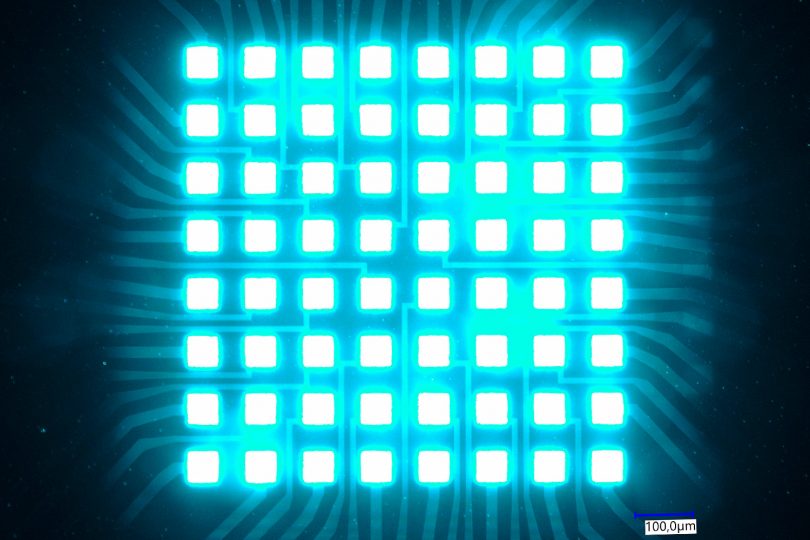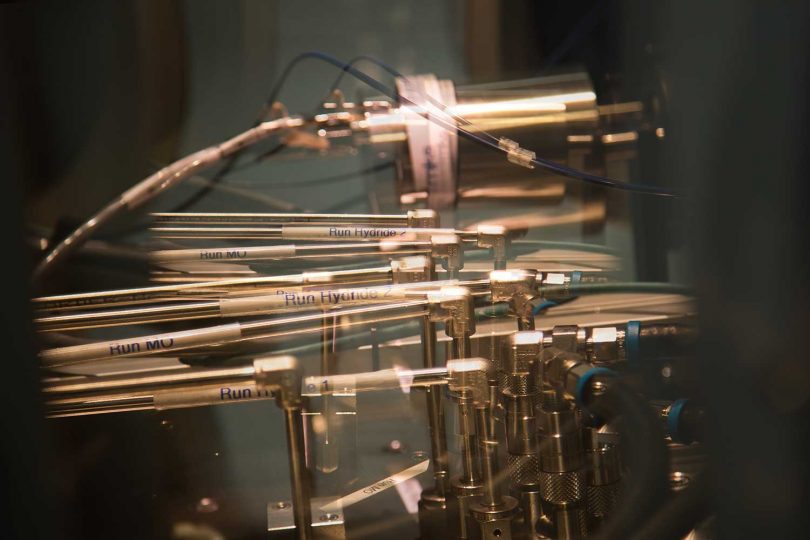In Pursuit of the Intangible The particle experiment to find Majorana fermions
For nearly 100 years, Majorana fermions have been considered mathematically possible but experimentally invisible. However, there appear to be quasiparticles in superconductors that have the properties of Majorana fermions. Discovering these Majorana quasiparticles (MQTs) would not only mean finding another piece of the puzzle for understanding nature. MQTs are also theoretically nearly perfect qubits, the building blocks of a quantum computer. Researchers at the Technische Universität Braunschweig, among others, are calculating methods within the framework of the Cluster of Excellence QuantumFrontiers to be able to lend shape to the intangible in experiments.

In pursuit of Majorana quasiparticles: Professor Patrik Recher. Picture credits: Max Fuhrmann/TU Braunschweig
The universe as we know it splits into two types of particles at the smallest level: bosons and fermions. Many of these elementary particles, which are often no longer decomposable, have been experimentally discovered and thus proven by scientists. However, there are still particles that exist only on paper, as results of mathematical equations. Such particles are the Majorana fermions. Their name is derived from Ettore Majorana, an Italian physicist who predicted their existence as early as 1937.
“The properties of Majorana quasiparticles,” explains Professor Patrik Recher of the Institute of Mathematical Physics at TU Braunschweig, “are special even by quantum physics standards: for one thing, they cannot be neatly assigned to bosons or fermions. For another, they only arise when other particles interact with each other – for example, in specially constructed superconductors. And even then, they are only where superconductivity is disturbed.”
A particle that is hard to detect
How does a particle escape the researchers’ gaze when they know very well where to look? Bosons and fermions usually have a characteristic electric charge or magnetic moment. This makes them easily observable by electromagnetic means. Majorana quasiparticles have neither. That is why scientists are now approaching the particles via detours.
Until now, the so-called Andreev reflection was considered the best evidence for the existence of Majorana quasiparticles. At the boundary between a superconductor and a normal conductor, there is a deflection in the conductance of the superconductor at zero voltage. The cause of the effect is believed to be the MQTs. “However, this does not yet prove the existence of the particles beyond doubt experimentally. It is only clear that some may exist there. So, that there is something there – not what is there,” says Professor Recher.
A ring walk for quasiparticles
Together with his team, Recher calculated an experiment that could make Majorana quasiparticles tangible. For this, a thin, normal-conducting ring separates two superconducting rings in a cylindrical apparatus. At the transition between normal and superconductor, i.e. where the superconductivity is disturbed, MQTs can arise. If a voltage is applied between the superconductors, the particles move along the thin ring. A scanning tunneling microscope tip stationary at the ring measures a current when one of them passes the microtip. If the particle has moved on, it measures none.
“Majorana quasiparticles only ever exist in pairs, which swap spatially as they rotate on the ring. This swapping process is reminiscent of braiding a braid. We have calculated that the measured current signals from the microscope carry information about the braiding of the particles. If we repeat these results in experiment, we can be sure that they are indeed Majorana quasiparticles,” Recher says.
A braided quantum computer
For MQTs to become qubits, the computational unit of a quantum computer, they must meet a list of criteria. For example, braiding can be used to prepare quantum information, the 0 or 1 of the normal computer. The strength of the particles: For reading this information, two MQTs must always be brought together. So as long as the particles are separated, the quantum information is protected from damage. Theoretically, such qubits would be error-free.
However, anyone who wants to make Majorana quasiparticles usable must find a way to detect them. The scientists working with Professor Patrik Recher have now come a big step closer to this process. The experiment will then show whether Majorana quasiparticles actually exist and whether the almost 100-year-old prediction comes true.


